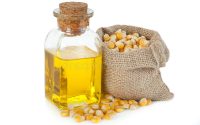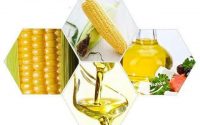Commonly used press method of edible vegetable oil
We eat vegetable oil every day ,but how much we know about the press method ?now ,the below are the 5 pressing methods
1.squeezing method
Squeezing the oil from the raw material by oil machine ,After the raw material was pretreatment ,than refining it to edible oil .there are single pressing ,twice pressing and leaching after prepressing,each can get the oil with different quality
Refining usually included “6 off ” like :Dehydration, degumming, deacidification, decolorization, deodorization, dewaxing ,we can choose one or more according the feature of different raw material .Applicable oil: rapeseed, peanuts, sunflower seeds, olive oil and so on.
squeezing method is traditional pressing method and widely used .it is called “cake”after pressing, and oil residue rate can reach about 5% by one press in the oil cake. residual oil rate for pre-pressing is usually around 15%.
2.leaching method
The raw material is the pretreated parison, or the pre-squeezed cake after squeezing, leaching with a n-hexane-based No. 6 solvent, or other solvents such as (propane, butane, isohexane).
Leaching is to soak the oil material with solvent, the grease in the oil material miscible with the solvent, filtrating and separation the solid impurities, and then heating and removing the solvent, these process is extracting oil. This oil is called crude oil and needs refining , Refine the “six off” process as described above depending on the material and product requirements.
Applicable oil: soybeans, rapeseed, peanuts, sunflower seeds and so on. After leaching, the residual oil rate of wolfberry can reach less than 1%.The leaching process has been introduced into China from the United States since the 1960s and 1970s. It has become popular in 90 years and widely is used in the oil industry. The solvents acetone and benzene were used in the early, which are more toxic, and then updated many, Since the 1990s, n-hexane has been widely used as a safe solvent.there are some plants use isohexane in US
Regarding the problem of solvents, the industry is indeed seeking better and safer solvents, or better processes. However, at present, the effectiveness is not great. Maybe there will be breakthrough progress in a decade or two.
3.Supercritical fluid method
It is usually the high pressure liquefaction of carbon dioxide, leaching the oil, then decompression, and the carbon dioxide conversion into gas released. This method extracts some high-value oils that are easily oxidized and easily lose nutrients, such as walnut oil.
The disadvantages are high process costs and a small range of applications.
4.Water Solvent Method
The water-solvent method for oil production is based on the characteristics of oil, the differences in the physical and chemical properties of water and oil, and use the water as a solvent for oil extraction. The traditional sesame oil uses this method. The application range is small and the oil extraction rate is low.
5.Aqueous enzymatic method
Aqueous enzymatic method is developed based on the water solvent method. The principle is to destroy the cell wall of plants seed by mechanical and biological enzymes, as well as to destroy lipoproteins, lipopolysaccharides and other “lipid complexes” so that the oil can be released.
The process mainly includes three types:aqueous enzymolysis, solvent-assisted aqueous enzymatic hydrolysis and low-moisture enzymatic extraction. The aqueous enzymatic hydrolysis process is the most common. Aqueous enzymatic hydrolysis process uses water as the dispersed phase, and the enzyme hydrolyzed in the



